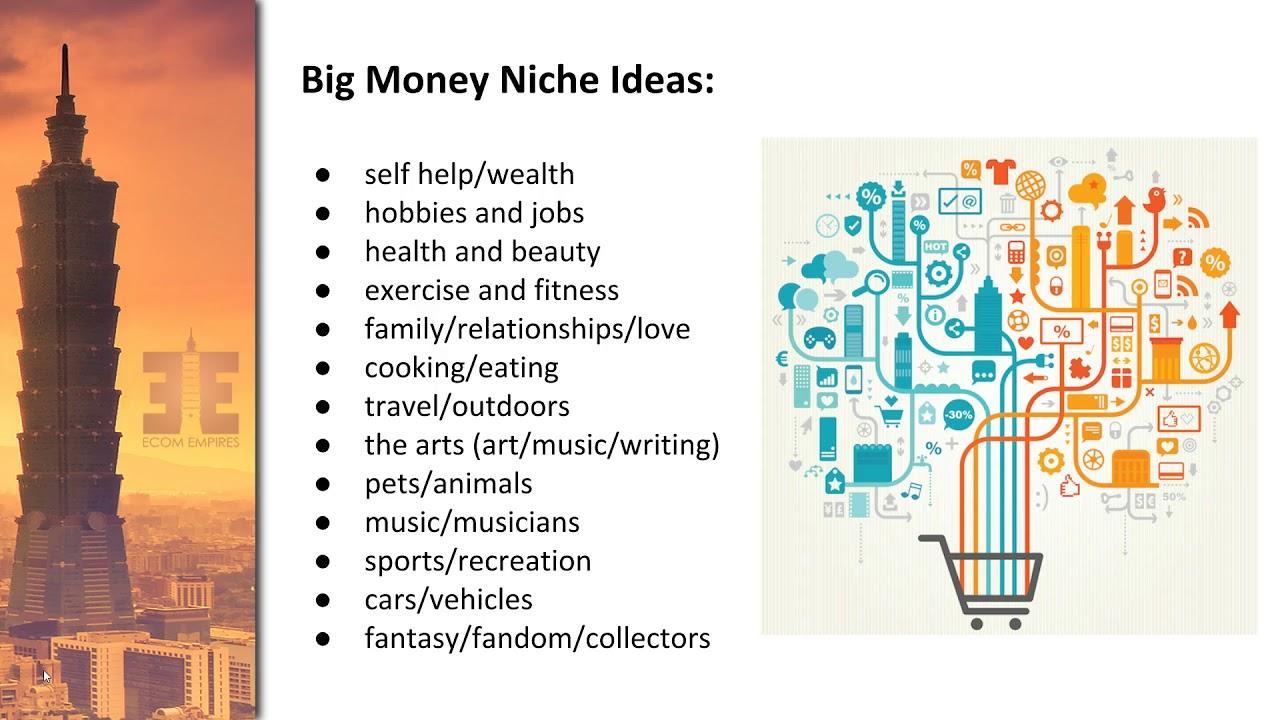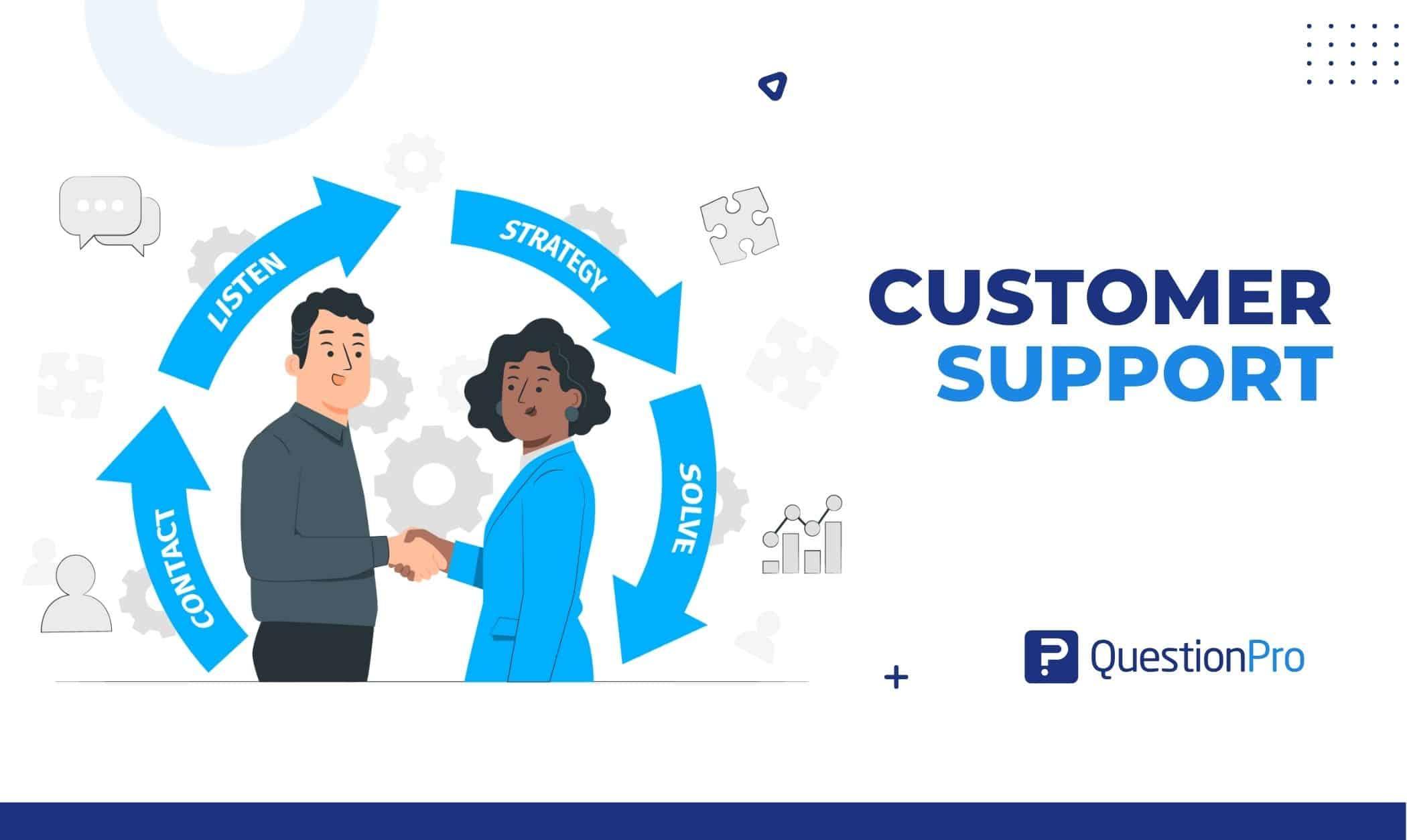
Are you dreaming of launching your very own online boutique but worried about breaking the bank? You’re not alone! Many aspiring entrepreneurs share this dream, but the thought of hefty startup costs can be daunting. The good news is, starting an online boutique on a budget is not only possible, it can also be incredibly rewarding! In this article, we’ll walk you through a simple, nine-step guide that will empower you to turn your fashion dreams into reality without draining your wallet. Whether you’re passionate about the latest trends or have a knack for unique finds, we’ll show you how to set up shop, attract customers, and start making sales—all while keeping your finances in check. So, grab a cup of coffee, and let’s dive into the exciting world of online retail!
Choosing Your Niche and Target Audience for Maximum Impact
When launching an online boutique, your success hinges on understanding your niche and the audience you want to reach. This isn’t just a step; it’s the foundation of your business. By honing in on a specific niche, you can differentiate yourself from competitors and create a loyal customer base.
Start by asking yourself some pivotal questions:
- What am I passionate about? Choose a niche that resonates with your interests or expertise. This passion will shine through in your marketing and customer interactions.
- Who are my competitors? Analyze businesses that are already established in your desired niche. What do they do well, and where can you offer something different?
- What problems can I solve? Consider what issues your potential customers face and how your products can address them. This approach will help you connect on a deeper level.
Once you’ve identified your niche, it’s time to focus on your target audience. Creating a customer persona can help you visualize who you are selling to. Think about demographics like:
| Demographic | Details |
|---|---|
| Age | 18-34 |
| Gender | Female |
| Location | Urban areas |
| Interests | Fashion, sustainability, online shopping |
This persona will guide your marketing strategies, helping you choose the right platforms to engage with your audience. For instance, if your target demographic is tech-savvy young adults, platforms like Instagram and TikTok may be more effective than Facebook.
Next, focus on the tone and messaging that resonates with your audience. Do they prefer casual, fun language, or do they lean towards a more professional tone? Consider the types of visuals that will appeal to them as well. This consistent branding will strengthen your boutique’s identity and build trust.
engage with your audience through surveys or social media polls to refine your understanding of their needs. This real-time feedback can provide invaluable insights that may shape future product offerings or marketing approaches. Remember, the more you know about your audience, the more effectively you can cater to them.
Creating a Business Plan That Keeps You Focused and Organized
When embarking on the journey of starting an online boutique, a well-crafted business plan acts as your roadmap. It helps you define your vision and the steps required to get there, keeping you organized and focused amidst the myriad of decisions you will face.
Your business plan should begin with a clear executive summary. This is a concise overview of your boutique—what you plan to sell, your target audience, and your unique selling proposition. Think of this as your elevator pitch; it should be compelling and make someone want to learn more about your business.
Next, dive into the market analysis. Understanding your niche is vital. Research your competitors and analyze their strengths and weaknesses. Identify your target demographic—age, gender, interests, and spending habits. This information will not only guide your marketing efforts but also help you tailor your product offerings effectively.
Following your analysis, outline your marketing strategy. This should detail how you plan to attract and retain customers. Consider various online platforms, such as social media and email marketing, to reach your audience. Here are a few strategies you might include:
- Leveraging Instagram and Pinterest for visual marketing.
- Creating engaging content that resonates with your target audience.
- Utilizing influencer partnerships to expand your reach.
Then, it’s crucial to develop a financial plan. Lay out your startup costs, monthly expenses, and projected revenue. A simple table can help visualize this:
| Expense Category | Estimated Costs |
|---|---|
| Website Development | $500 |
| Initial Inventory | $1,500 |
| Marketing & Advertising | $300 |
| Ongoing Operational Costs | $200/month |
After laying the groundwork, outline your operational plan. This should detail your sourcing process, inventory management, and fulfillment methods. Consider how you’ll handle shipping and returns, as customer satisfaction is crucial in the online retail space.
always keep your goals in mind. Set short-term and long-term objectives, which will serve as milestones to measure your progress. Regularly reviewing and adjusting these goals based on performance data will help keep your boutique on the path to success. Remember, a well-structured business plan is not just a document; it’s a living guide that evolves with your business.

Finding Affordable Suppliers Without Compromising Quality
When launching an online boutique, finding the right suppliers can be a game-changer, especially when you’re working with a tight budget. You want to offer your customers quality products without breaking the bank. Below are some strategies to help you discover affordable suppliers while maintaining high standards.
Research and Network: Start by tapping into your network and leveraging online resources:
- Join online forums and social media groups dedicated to fashion and retail.
- Attend trade shows and virtual expos where suppliers showcase their products.
- Utilize platforms like Alibaba, Etsy Wholesale, or Maker’s Row to find manufacturers.
Request Samples: Before committing to a supplier, don’t hesitate to request samples. This step is crucial:
- Evaluate the quality of the materials and craftsmanship.
- Consider the responsiveness of the supplier during the sampling process.
- Look for consistency in quality across different pieces.
Negotiate Terms: Once you’ve identified potential suppliers, it’s time to engage in negotiations. Here’s how:
- Discuss minimum order quantities (MOQs) to find a balance that works for both parties.
- Inquire about bulk discounts or payment terms that could ease your initial cash flow.
- Don’t shy away from asking if they offer exclusive deals for new boutique owners.
Evaluate Shipping Costs: Shipping can significantly impact your overall budget. Consider these factors:
- Compare shipping rates from different suppliers.
- Look for suppliers who offer free or discounted shipping on large orders.
- Factor in delivery times to ensure your products reach you promptly.
Check Reviews and Testimonials: Before making any commitments, do your due diligence:
- Read reviews from other boutique owners who have worked with the supplier.
- Ask for references to get firsthand accounts of their experiences.
- Check for any red flags regarding quality and service.
Consider Local Suppliers: Sometimes, local suppliers can offer competitive pricing and quality:
- Look for nearby manufacturers or artisans who produce unique items.
- Support local businesses and reduce shipping costs simultaneously.
- Establishing a local relationship can lead to better deals and quicker turnaround times.
Stay Flexible: The market is always changing, and being adaptable can work in your favor:
- Be open to discovering new suppliers as your business grows.
- Regularly review your supplier relationships to ensure they meet your evolving needs.
- Consider seasonal partnerships for unique collections during special occasions.
Finding the perfect balance between affordability and quality is essential in launching a successful online boutique. By implementing these strategies, you can build a robust supplier network that supports your business goals while keeping your budget intact.

Building Your Brand Identity on a Budget That Stands Out
Creating a strong brand identity is essential, especially for an online boutique operating on a budget. A compelling identity helps you connect with your target audience, convey your unique value proposition, and distinguish your business in a crowded market. Here are several strategies to build your brand identity effectively without breaking the bank:
- Define Your Niche: Narrowing down your target audience allows you to tailor your branding efforts. Consider factors like age, style preferences, and shopping habits. A well-defined niche not only guides your branding but also helps in creating tailored marketing strategies.
- Create a Memorable Logo: Your logo is often the first impression customers will have of your brand. Use online tools like Canva or LogoMaker to design a simple yet impactful logo that reflects your boutique’s personality.
- Choose a Color Palette: Colors evoke emotions and play a significant role in brand recognition. Select a color palette that resonates with your audience and aligns with your brand message. Tools like Adobe Color can assist you in finding complementary shades.
- Develop a Unique Brand Voice: Your brand voice should be consistent across all platforms, whether it’s fun and quirky or elegant and sophisticated. This voice will be reflected in your website copy, social media posts, and customer interactions.
- Utilize Social Media: Platforms like Instagram and Pinterest are ideal for fashion boutiques. Create visually appealing content that showcases your products and resonates with your audience. Engaging stories and reels can also help boost visibility.
To further enhance your brand identity, consider the following:
- Engage with Your Community: Building a community around your brand can foster loyalty. Encourage customers to share their experiences on social media using a specific hashtag. Engaging with your audience makes them feel valued and connected to your brand.
- Craft a Compelling Brand Story: Share your journey—the inspiration behind your boutique, what motivates you, and your values. A relatable story can create an emotional connection with customers, making them more likely to choose your brand over others.
- Leverage User-Generated Content: Encourage customers to share photos of themselves wearing your products. Feature these images on your website and social media, providing authentic social proof that your brand resonates with real people.
| Brand Element | Tips for Budget Building |
|---|---|
| Logo | Use free design tools; consider freelance platforms for budget-friendly options. |
| Website | Utilize affordable e-commerce platforms like Shopify or WooCommerce. |
| Social Media | Engage consistently; use free tools for scheduling and analytics. |
| Photography | Learn basic photography skills; utilize natural lighting for product shots. |
Remember, investing time and creativity can often compensate for a lack of financial resources. By focusing on these elements, you can create a brand identity that not only reflects your boutique’s essence but also resonates with your audience deeply. This approach will set your boutique apart, making it memorable and appealing to potential customers.
Setting Up Your Online Store with Free or Low-Cost Platforms
When it comes to launching your online boutique, the platform you choose can significantly impact your budget. Thankfully, there are numerous free or low-cost platforms that allow you to create a stunning online store without breaking the bank. Here are some popular options to consider:
- Shopify: While not free, it offers a 14-day free trial and starts at a reasonable monthly fee. It’s user-friendly and comes with a variety of templates.
- WooCommerce: Perfect for those familiar with WordPress, this plugin allows you to turn your site into a fully functional online store at little to no cost.
- Etsy: If your boutique features handmade or vintage items, Etsy is a great platform with low listing fees and a built-in audience.
- Squarespace: Offers beautiful, customizable designs with a starting price that includes hosting and SSL security—ideal for visually rich brands.
- Big Cartel: Aimed at independent artists and makers, Big Cartel has a free plan for up to 5 products, making it a budget-friendly choice.
Choosing the right platform depends on your specific needs, but consider factors like ease of use, payment processing options, and customer support. A platform that fits your style and technical skill can save you hours of frustration and keep your focus on building your business.
Once you’ve chosen a platform, the next step is to customize your store. Most platforms provide intuitive drag-and-drop functionality, allowing you to create a beautiful storefront that reflects your brand. Here are some tips for customization:
- Choose a theme: Select a theme that aligns with your boutique’s aesthetic. Look for responsive designs that work well on both desktop and mobile devices.
- Add high-quality images: Use professional photos of your products. Good visuals can significantly increase conversion rates.
- Create compelling product descriptions: Highlight the unique features and benefits of each item, and don’t forget to use keywords for SEO.
Next, consider your payment processing options. Many platforms have integrated payment gateways that are easy to set up. However, it’s essential to evaluate the transaction fees associated with each option. Here’s a quick comparison:
| Payment Gateway | Transaction Fee | Ease of Setup |
|---|---|---|
| PayPal | 2.9% + $0.30 per transaction | Very Easy |
| Stripe | 2.9% + $0.30 per transaction | Easy |
| Square | 2.6% + $0.10 per transaction | Easy |
don’t underestimate the power of social media and online marketing to drive traffic to your store. Many platforms offer marketing tools or integrations that can help you promote your boutique effectively. Leverage platforms like Instagram and Pinterest to showcase your products and connect with potential customers.
setting up your online store on a budget is achievable with the right approach and tools. Focus on finding a platform that aligns with your vision, customize it to fit your brand, and use smart marketing strategies to attract customers. With dedication and creativity, you can build a successful online boutique without overspending.
Crafting Compelling Product Descriptions That Sell
When it comes to selling products online, the description is your chance to shine. A well-crafted product description does more than just inform; it persuades potential buyers to click that “Add to Cart” button. Here are some strategies to consider:
- Know Your Audience: Understand who’s shopping for your products. Tailoring your descriptions to their preferences and pain points can create a connection that drives sales.
- Use Sensory Language: Invoking the senses can make your products more appealing. Words that describe texture, scent, and even sound can help customers envision what they’re missing out on.
- Highlight Benefits, Not Just Features: While it’s important to mention features, focusing on the benefits helps customers understand how your product will enhance their lives.
Another effective technique is storytelling. Share the inspiration behind your products or how they can fit into a customer’s lifestyle. For example, instead of simply stating that a dress is made of soft fabric, you might say:
“Imagine slipping into this dreamy dress after a long day, feeling the soft fabric hug your skin as you unwind with friends over dinner.”
This kind of narrative pulls customers in and helps them visualize their own experience with the product.
Don’t forget about the power of formatting. Break up text with bullet points or bold key phrases to make your descriptions easier to skim. Here’s a quick table comparing two product description styles:
| Traditional Style | Engaging Style |
|---|---|
| This dress is made from 100% cotton. | Made from 100% cotton, this dress offers breathability and comfort, perfect for those sunny days out! |
| The wallet has RFID protection. | Keep your identity safe with this stylish wallet featuring cutting-edge RFID protection—style and security in one! |
always include a call to action. Encourage your customers to take the next step. Phrases like “Shop now to elevate your wardrobe!” or “Grab yours today before it’s gone!” instill a sense of urgency and excitement.
By weaving together these elements—understanding your audience, using vivid language, incorporating storytelling, formatting for ease, and including a strong call to action—you can create product descriptions that not only sell but build a loyal customer base, all while keeping your boutique budget-friendly.

Leveraging Social Media for Cost-Effective Marketing Strategies
In today’s digital landscape, social media has emerged as a powerhouse for marketing, especially for those starting an online boutique on a budget. With countless platforms at your disposal, you can reach potential customers without breaking the bank. Here’s how to harness the power of social media for your boutique.
Choose the Right Platforms
Not all social media platforms are created equal, and each one caters to different demographics. Focus your efforts on platforms where your target audience is most active. Here are a few to consider:
- Instagram: Ideal for visually showcasing your products.
- Facebook: Great for building a community and engaging with customers.
- Pinterest: Perfect for driving traffic through visually appealing content.
Create Engaging Content
Content is king, and when it comes to social media, engaging content reigns supreme. Invest time in creating eye-catching visuals and captivating captions. Here are some content ideas:
- Behind-the-scenes looks at your boutique’s creation process.
- Styling tips featuring your products.
- User-generated content showcasing customers wearing your items.
Utilize Influencer Marketing
Partnering with micro-influencers can amplify your boutique’s visibility without hefty fees. Their followers are often highly engaged, making it a cost-effective way to tap into new audiences. When selecting influencers, consider:
- Their alignment with your brand values.
- The engagement rate of their audience.
- The authenticity of their content.
Leverage Hashtags and Trends
Using relevant hashtags can significantly increase your post visibility. Research popular hashtags related to your niche and incorporate them into your posts. Additionally, keep an eye on trending topics and challenges—jumping on these can help you reach a broader audience.
Engage with Your Audience
Building a loyal customer base goes beyond posting content. Actively engage with your audience by responding to comments, hosting giveaways, and asking for feedback. This interaction fosters community and encourages customers to share your brand with their networks.
Analyze and Adjust
To ensure your social media strategies are effective, regularly analyze your performance metrics. Pay attention to metrics like engagement rates, click-through rates, and follower growth. Use this data to adjust your strategies and optimize future posts for better results.
Consistency is Key
maintain consistency in your posting schedule and brand voice. Establish a content calendar to help you plan your posts in advance. This disciplined approach will keep your audience engaged and eager for new content from your boutique.
By effectively leveraging social media, you can create a buzz around your online boutique without overspending. Embrace creativity, authenticity, and engagement, and watch your brand flourish in the digital marketplace.

Utilizing Influencer Partnerships to Boost Your Reach
Influencer partnerships can be a game changer for your online boutique, especially when you’re trying to stretch a tight budget. Collaborating with influencers not only increases your brand visibility but also allows you to tap into established communities that trust their recommendations. Here are some effective strategies to consider:
- Identify the Right Influencers: Look for influencers whose style aligns with your boutique’s aesthetic. Their audience should also match your target demographic to ensure a higher engagement rate.
- Leverage Micro-influencers: Often, micro-influencers have higher engagement rates than larger influencers. They may not have millions of followers, but their loyal community often trusts their opinions more. Plus, partnerships with them can be more budget-friendly.
- Offer Product Samples: One of the best ways to get influencers on board is by offering them free products. This not only gives them something tangible to promote but also provides an authentic experience they can share with their audience.
- Create a Unique Hashtag: Develop a catchy and unique hashtag that influencers can use when posting about your products. This helps in tracking engagement and encourages followers to participate, creating a community around your brand.
Once you’ve established partnerships, here are some ideas on how to maximize their potential:
- Run Giveaways: Collaborate with influencers to host giveaways. This can incentivize their followers to engage with your brand and increase your social media following concurrently.
- Content Collaboration: Work with influencers to create content that showcases your products in an authentic light. This could be through styling tips, lookbooks, or even behind-the-scenes videos that tell a story about your brand.
- Feature Influencer Reviews: Encourage influencers to share honest reviews of your products. Genuine feedback can lead to increased trust and convert their followers into customers.
To keep track of your influencer marketing efforts and their effectiveness, consider creating a simple monitoring table like this:
| Influencer Name | Platform | Follower Count | Engagement Rate | Collaboration Type |
|---|---|---|---|---|
| Jane Doe | 15k | 6% | Product Review | |
| John Smith | Blog | 20k | 8% | Giveaway |
| Emily Brown | YouTube | 10k | 10% | Styling Video |
Influencer partnerships are not just about promotion; they’re about building relationships. Engage with your influencers by liking their posts and leaving thoughtful comments. This can enhance your visibility and strengthen your relationship, making them more likely to promote your brand enthusiastically.
influencer partnerships can significantly amplify your reach without breaking the bank. By choosing the right influencers and fostering genuine relationships, you can effectively promote your online boutique and drive sales while staying within your budget. Embrace the power of influencers, and watch your boutique flourish!

Managing Inventory Wisely to Minimize Costs
Managing your inventory effectively is crucial for any online boutique, especially when you’re working with a tight budget. With the right strategies in place, you can keep your costs low while still offering a fantastic selection to your customers. Here are some tips to consider:
- Analyze Sales Trends: Regularly review which items are selling well and which are not. This will help you focus on stocking items that generate the most revenue.
- Use Inventory Management Software: Investing in a good inventory management tool can save you time and money. Look for affordable options that provide features like tracking sales and managing stock levels.
- Opt for Just-In-Time Inventory: Instead of overstocking, consider a just-in-time approach, where you order products only as needed. This minimizes storage costs and reduces the risk of excess inventory.
- Diversify Your Supplier Base: Don’t rely on a single supplier. Having multiple suppliers can give you more flexibility in pricing and availability, allowing you to pivot quickly based on demand.
To better understand your inventory turnover and how it affects your overall costs, consider the following table:
| Item | Cost | Average Monthly Sales | Turnover Rate |
|---|---|---|---|
| Summer Dress | $25 | 30 | 1.2 |
| Graphic Tee | $15 | 50 | 3.0 |
| Denim Jacket | $40 | 10 | 0.25 |
This table illustrates how different items perform in your inventory. Higher turnover rates indicate that you should consider increasing your stock of those items, while items with low turnover might need a reevaluation of your marketing or pricing strategy.
Additionally, don’t forget about the importance of seasonal trends. Stay ahead of the game by planning your inventory months in advance. Knowing what your customers will want during peak seasons allows you to adjust your orders accordingly and avoid stockouts or surplus. Here are more strategies to consider:
- Implement Pre-Orders: This not only gives you a clearer picture of demand but also allows you to gauge interest before committing to larger orders.
- Regular Stock Audits: Conduct routine audits to identify slow-moving stock and take action, whether through discounts or bundling products together to encourage sales.
- Offer Exclusive Limited Editions: Create buzz by offering limited-time items. This can drive urgency and help move inventory faster.
By applying these tactical approaches to inventory management, you can minimize costs and enhance your boutique’s profitability. Remember, a well-managed inventory is not just about cutting costs; it’s about ensuring that your customers find what they want, when they want it—without breaking the bank.

Providing Stellar Customer Service to Build Loyalty
In the world of e-commerce, especially for online boutiques, the customer experience can make or break your business. Providing exceptional customer service is not just a bonus; it’s a necessity for building loyalty and keeping your customers coming back for more. Here’s how you can elevate your customer service game without breaking the bank.
Personalized Communication is key. Take the time to address your customers by name in emails and messages. A simple “Hi, Sarah!” can make a world of difference. Whenever possible, tailor your responses to reflect their shopping preferences and previous purchases. This personal touch helps customers feel valued and understood.
Responsive Interaction is another critical aspect. In the fast-paced online shopping world, customers expect quick responses. Aim to reply to inquiries within 24 hours. Use social media platforms and chatbots to provide instant answers to common questions. Remember, being available when your customers need you demonstrates reliability and builds trust.
Don’t underestimate the power of follow-ups. After a purchase, send a friendly email thanking your customer for their order. Consider including a special discount for their next purchase or asking for feedback on their shopping experience. This not only shows appreciation but also encourages future sales and improves your service based on customer input.
Creating a loyalty program can significantly enhance customer retention. Offer rewards for repeat purchases, referrals, or social media shares. Here’s a simple example of how you could structure a loyalty program:
| Action | Reward |
|---|---|
| First Purchase | 10% Off Next Order |
| Refer a Friend | $5 Store Credit |
| Birthday Month | 15% Off |
Transparency in your business practices builds trust. Be clear about shipping times and return policies. If there’s a delay, inform your customers promptly. This openness fosters goodwill and helps manage customer expectations.
Lastly, always seek feedback. Create a simple survey post-purchase to understand what customers loved or what could be improved. This not only helps you refine your offerings but also shows that you value their opinions, further strengthening their loyalty to your brand.
By focusing on these essential customer service strategies, you can create a loyal customer base that returns time and again, helping your online boutique thrive on a budget.

Using Analytics to Drive Future Business Decisions
In the competitive world of online boutiques, making informed decisions is crucial for success. By leveraging analytics, you can gain invaluable insights into customer behavior, sales trends, and inventory management, enabling you to make strategic choices that drive growth.
Start by gathering data from multiple sources, such as:
- Website Analytics: Tools like Google Analytics can provide detailed information on traffic sources, user engagement, and conversion rates.
- Social Media Insights: Platforms like Instagram and Facebook offer analytics that show which posts resonate most with your audience.
- Email Marketing Metrics: Track open rates, click-through rates, and conversions to understand how effective your campaigns are.
Analyzing this data will help you identify patterns and preferences among your customers. For example, if you notice a spike in sales for a particular product during a specific season, you can plan your inventory and marketing strategies accordingly. Here’s where segmentation comes into play. Group your customers based on their purchasing behavior and preferences, allowing for tailored marketing efforts, such as:
- Personalized Promotions: Send targeted discounts to specific segments to boost sales.
- Curated Product Recommendations: Suggest items based on past purchases to enhance the shopping experience.
Another powerful aspect of analytics is forecasting future trends. By examining historical sales data, you can predict which products are likely to be popular in upcoming seasons. Consider creating a simple table to visualize your findings:
| Season | Top-Selling Products | Forecasted Trends |
|---|---|---|
| Spring | Floral Dresses | Pastels and Bright Colors |
| Summer | Beachwear | Eco-Friendly Materials |
| Fall | Layered Outfits | Earth Tones and Textures |
Moreover, customer feedback can be a goldmine for future improvements. Encourage reviews and ratings on your website and social media platforms. Use sentiment analysis tools to categorize feedback and identify areas for enhancement. This will not only help you refine your product offerings but also build trust and loyalty among your customers.
Lastly, always be open to experimenting with new strategies based on your analytics. Running A/B tests on your website design or marketing campaigns can yield insights into what works best for your audience. The goal is to create a continuous cycle of learning and adapting, ensuring that your online boutique remains relevant and appealing to your target market.

Scaling Your Business Without Breaking the Bank
Launching an online boutique can feel like a daunting task, especially when you’re conscious of your budget. However, with a little creativity and strategic planning, you can scale your business without draining your finances. Here are some key strategies to keep your expenses low while maximizing your growth potential.
Leverage Social Media: Social platforms are a treasure trove for promoting your boutique. Consider these tactics:
- Utilize Instagram and Pinterest for visually appealing content.
- Create engaging stories and reels to showcase your products.
- Engage with your audience through polls, Q&As, and giveaways.
Start Small with Inventory: Instead of flooding your shop with products, focus on:
- A small curated collection that reflects your brand.
- Testing different styles to gauge customer preference.
- Reinvesting profits into new inventory based on sales data.
Utilize Dropshipping: To avoid the costs associated with stocking inventory, consider these advantages:
- No upfront investment in products.
- Ability to offer a wider range of products without financial risk.
- Focus your efforts on marketing and customer experience instead of logistics.
Build an Email List: Email marketing is a cost-effective way to maintain customer relationships. Here’s how to grow your list:
- Offer an incentive, like a discount code, for signing up.
- Send regular newsletters featuring new arrivals and exclusive deals.
- Engage your audience with personalized content that resonates.
Collaborate with Influencers: Influencer marketing doesn’t have to break the bank. Consider these steps:
- Reach out to micro-influencers with a loyal following and reasonable rates.
- Negotiate product exchanges for promotions instead of cash payments.
- Focus on building long-term relationships for ongoing exposure.
| Strategy | Benefit |
|---|---|
| Social Media Marketing | Cost-effective reach and engagement. |
| Dropshipping | Low-risk inventory management. |
| Email Marketing | Direct communication with loyal customers. |
| Influencer Collaborations | Access to new audiences without high costs. |
By implementing these strategies, you can create a scalable online boutique that thrives on a budget. Remember, the key is to stay adaptable and regularly evaluate what works best for your brand. With the right approach, you’ll be well on your way to achieving your business goals without stretching your finances too thin.

Staying Compliant with Legal Requirements on a Budget
Launching your online boutique doesn’t have to break the bank, but staying compliant with legal requirements is non-negotiable, even on a budget. Fortunately, there are several cost-effective strategies to help you navigate the legal landscape without sacrificing quality or peace of mind.
First and foremost, consider researching local and federal regulations that apply to your business. Many government websites provide free resources that outline the necessary legal steps, such as:
- Business licensing and permits
- Sales tax collection and reporting
- Consumer protection laws
- Intellectual property rights
Next, take advantage of free or low-cost online courses and webinars that focus on legal compliance for small businesses. Platforms like Coursera and the Small Business Administration (SBA) offer valuable insights without the hefty price tag. These resources can help you understand your obligations while empowering you to make informed decisions.
Incorporating a solid terms and conditions page on your website is essential. You can find templates online that cater to e-commerce businesses, which can save you money on legal fees. Just make sure to customize these templates to reflect your specific operations and policies. This simple step will help protect you from potential disputes with customers.
When it comes to trademarking your brand, you might think it’s too expensive, but there are affordable options. Start by conducting a trademark search through the U.S. Patent and Trademark Office (USPTO) website to ensure your brand name and logo are unique. If you’re ready to file, consider using online services that offer competitive rates compared to traditional legal firms.
Lastly, keeping track of your finances is crucial for compliance. Utilize free accounting software like Wave or ZipBooks to manage your income and expenses. These tools can help you stay organized, making it easier to prepare for tax time and ensuring you’re meeting all financial obligations.
| Legal Requirement | Cost-Effective Solution |
|---|---|
| Business License | Local government websites |
| Sales Tax Compliance | Online accounting tools |
| Trademark Registration | USPTO and online services |
| Terms and Conditions | Free templates available |
By prioritizing compliance from the beginning, you’ll not only protect your boutique but also build trust with your customers. Remember, investing time in understanding the legalities now can save you significant headaches—and money—in the future. Your online boutique can thrive while remaining on the right side of the law!

Continuously Learning and Adapting to Stay Competitive
Running an online boutique isn’t just about launching your store; it’s also about evolving with the market. The digital landscape is ever-changing, and staying competitive means you must continuously learn and adapt. Here’s how to keep your boutique thriving:
- Stay Informed: Subscribe to industry newsletters, follow trendsetters on social media, and join online forums. Knowledge is power, and being aware of the latest trends can help you stay ahead.
- Customer Feedback: Create a feedback loop with your customers. Use surveys and direct messages to gather insights about their shopping experience. This information can guide your decisions on inventory and marketing strategies.
- Online Courses: Invest time in online courses related to retail, marketing, or e-commerce. Platforms like Coursera or Udemy offer affordable options that can enhance your skills without breaking the bank.
- Network: Join local or online business groups where you can connect with other boutique owners. Sharing experiences and strategies can provide new perspectives and ideas.
Embrace technology by leveraging tools that can streamline your operations. Consider using:
| Tool | Purpose | Cost |
|---|---|---|
| Shopify | E-commerce platform | Starting at $29/month |
| Mailchimp | Email marketing | Free for up to 2,000 subscribers |
| Canva | Graphic design | Free with premium options |
| Hootsuite | Social media management | Starting at $19/month |
Furthermore, don’t shy away from experimenting with your offerings. A/B testing various product lines or marketing strategies can provide insight into what resonates with your audience. For instance, try different promotional styles to see which garners the best response or assess how a limited-time sale impacts sales volume.
Also, keep an eye on your competitors. Analyzing their strategies can yield valuable lessons. Pay attention to their product launches, customer engagement tactics, and marketing initiatives. However, while you learn from your competition, ensure your brand maintains its unique identity. Authenticity is key in building customer loyalty.
foster a growth mindset. Encourage yourself and your team to view challenges as opportunities for growth. Whether it’s a dip in sales or a supply chain issue, focusing on solutions rather than problems will help cultivate resilience in your business.
Frequently Asked Questions (FAQ)
Q&A: How to Start an Online Boutique on a Budget (9-Step Guide)
Q1: What’s the first step to starting an online boutique on a budget?
A1: Great question! The first step is to solidify your vision. Think about what type of products you want to sell and who your target audience is. This clarity will guide your decisions as you move forward. Plus, having a focused vision helps keep your costs in check by narrowing down your options.
Q2: Do I really need a business plan?
A2: Yes! A business plan might sound formal, but it’s like your roadmap. It doesn’t have to be lengthy or complicated. Just jot down your goals, budget, and marketing strategies. This will keep you organized and help you avoid unnecessary expenses down the line.
Q3: How can I choose the right platform to launch my boutique without breaking the bank?
A3: There are several affordable platforms like Shopify, Etsy, or even Facebook Marketplace that cater to small businesses. Look for options that offer free trials or low monthly fees. Consider your technical skills, too—choose a platform that feels intuitive to you!
Q4: What about sourcing products? How can I find affordable inventory?
A4: Sourcing can be tricky, but there are budget-friendly options! Consider dropshipping, where you only purchase products after a sale. You can also check out wholesale suppliers or local artisans. Remember, quality is key—don’t compromise just to save a few bucks!
Q5: How can I brand my boutique without spending a fortune?
A5: Branding can be done creatively and inexpensively! Use free design tools like Canva to create a logo and social media graphics. Focus on storytelling in your brand—share your journey and values, which can resonate more than a fancy logo.
Q6: What marketing strategies can I employ on a budget?
A6: There are tons of cost-effective marketing strategies! Utilize social media platforms to showcase your products and connect with potential customers. Engage in influencer marketing by collaborating with micro-influencers who align with your brand—they often work for product exchanges rather than hefty fees!
Q7: Is it worth investing in a professional website?
A7: A professional website can enhance credibility, but you don’t need to go overboard initially. Start with a clean, simple design that highlights your products. As your business grows, you can invest in upgrades. Remember, functionality and user experience are what really matter!
Q8: How can I manage my finances effectively as a new boutique owner?
A8: Keep it simple! Use basic accounting software or even spreadsheets to track your income and expenses. Set a budget for your boutique and stick to it. Regularly review your finances to identify areas where you can cut costs or reallocate funds effectively.
Q9: What are some common mistakes to avoid when starting on a budget?
A9: One major mistake is overspending on inventory before testing the market. Start small, gauge customer interest, and then scale up. Another is neglecting to build an email list. It’s a powerful tool for driving sales and engaging with your audience without extra costs!
Q10: How can I stay motivated throughout this journey?
A10: Remember your “why.” Keep your goals in sight and celebrate small wins. Join online communities of other boutique owners for support and inspiration. Surround yourself with positivity and remind yourself that every step, no matter how small, is progress!
By taking these steps, you can confidently embark on your journey to launch a successful online boutique without draining your bank account. Embrace the challenge, and you’ll find it’s not just possible—it can be incredibly rewarding!
Insights and Conclusions
And there you have it! Launching your own online boutique doesn’t have to be a daunting task, especially when you keep your budget in check. By following these nine straightforward steps, you can turn your passion for fashion into a thriving business without breaking the bank. Remember, every big dream starts with a small step, and with a little creativity and dedication, you can carve out your niche and connect with customers who appreciate your unique style.
So, what are you waiting for? Grab that notebook, jot down your ideas, and take the plunge! Your online boutique is just a few steps away—ready to showcase your vision and creativity. And hey, don’t forget to keep learning and adapting along the way. The world of online retail is always evolving, and so can you.
If you found this guide helpful, share it with a friend who’s looking to dive into the world of e-commerce, or drop a comment below to let us know your thoughts! Here’s to your success—let’s get that boutique up and running! Happy selling!






